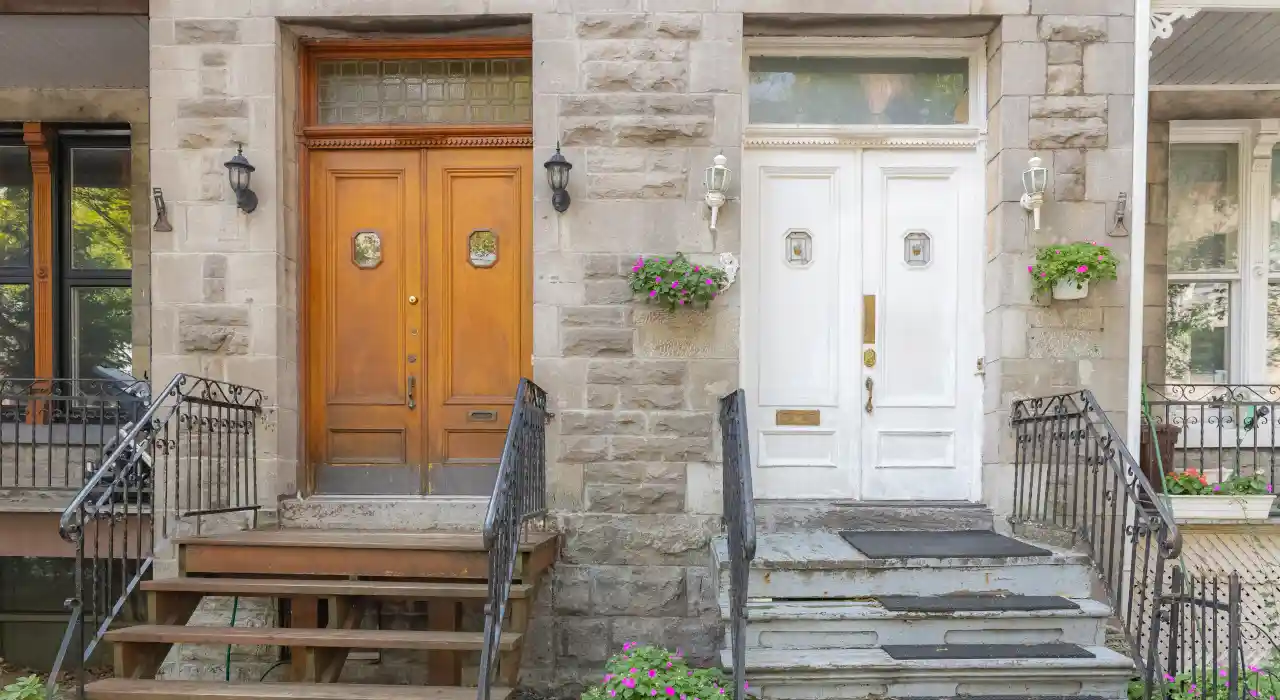Canvassing, also known as door-knocking, is a central part of election campaigns. The way candidates canvass differs from how volunteers do it. Our approach also changes depending on whether we’re in a battleground riding or in a riding where victory seems secure.
This guide doesn’t cover everything but focuses on what first-time volunteers most need to know.
Why We Knock on Doors
At first, it might seem like we knock on doors simply to hand out pamphlets. But there’s an important difference between just leaving pamphlets and actually having a conversation.
Trying to change the minds of strong supporters of other parties? That’s probably too ambitious for your first shift.
For most volunteers, the main task is to gather information. This helps the campaign team take the right actions:
- If someone supports our candidate, the team will follow up on voting day.
- If they want a yard sign, the sign team will install it.
- If they want to donate or volunteer, campaign staff will contact them.
In battleground ridings, experienced canvassers may focus on persuading undecided voters.
For first-time canvassers, think of yourself as a field researcher: helping the campaign collect information, not as a salesperson.
What Information Should You Collect?
The most important piece of information is whether the person supports our candidate. Confirming supporters allows us to remind them to vote, which is one of the most efficient ways to secure votes.
Other information depends on the campaign’s plan, but common questions include:
- Who they are voting for.
- Which day they plan to vote (as election day approaches).
- If they want a yard sign.
- If they are interested in volunteering.
- If they need a ride to the polling station.
Note: You don’t need to ask everything at once; focus on what the campaign asks you to prioritize.
Whose Doors We Knock On
You don’t need to decide which doors to knock on yourself. The campaign team will provide a list, usually prepared in advance.
Before your shift, they’ll give you instructions, the list, and any necessary materials. Your job is to visit the assigned addresses, knock, and start the conversation.
What to Say When the Door Opens
Most campaigns provide a script, but real conversations often don’t follow it exactly. Focus on your purpose rather than memorizing lines.
A basic structure:
- Greeting
Introduce yourself as a volunteer. Mention the candidate’s name, the party, and when the election is happening. Sometimes mentioning the party leader helps too.
- Confirming the Voter’s Identity
Ask if you’re speaking with the person on your list. If yes, ask who they are planning to vote for.
- Additional Information
If they support your candidate, ask if they’ve already voted or when they plan to vote. Also ask if they’d like a yard sign, more information, or to volunteer.
- Other People in the Household
If it feels natural, ask about others in the household. Sometimes people know; sometimes they don’t. Don’t push too hard.
How to Record Data
Once the conversation is done, record the information right away.
Most campaigns use a smartphone app for this. Some still use paper lists. Either way, don’t rely on memory; record things as you go.
How to Handle Problems
When canvassing, you’re usually paired with at least one other volunteer. If something happens:
- Ask a more experienced volunteer if they know what to do.
- If needed, contact the campaign office. Make sure you have their number before starting your shift.
For non-urgent issues, make a note and ask campaign staff during the debriefing after your shift.
What Is the “Right” Way to Door-Knock?
There’s no single formula for canvassing. What you need to do depends on what the campaign team asks for, and that depends on their plan to get more votes.
Always ask campaign staff if there’s anything specific they want you to focus on, especially beyond just identifying supporters.
Before heading out or while being briefed, it’s a good time to ask: “What should I focus on today besides asking if someone is a supporter?”
Key Takeaways from This Topic
What is door-knocking in a campaign?
Door-knocking, or canvassing, is when volunteers visit voters at home to gather information, share the candidate’s message, and help move supporters to action.
Why do campaigns knock on doors instead of just leaving flyers?
Having real conversations lets volunteers identify supporters, recruit volunteers, and offer yard signs or help with voting, much more than a flyer can do.
What information should volunteers collect while canvassing?
Focus on whether the person supports the candidate. Other questions may include if they want a sign, plan to vote, or are interested in volunteering.
Do volunteers decide which doors to knock on?
No. Campaign staff provide a prepared list of addresses. Volunteers follow this list during their shift.
What should I say when someone answers the door?
Introduce yourself as a volunteer, mention the candidate and party, and ask if they’ve decided who to vote for. Use the script as a guide but speak naturally.
How do I record the answers I get?
Use the smartphone app or paper list provided by the campaign. Record responses right away, and don’t rely on memory.
What should I do if I run into a problem while door-knocking?
Ask an experienced volunteer or contact the campaign office. Always bring the office’s phone number and raise non-urgent issues at the debrief after your shift.
Is there a right way to door-knock?
It depends on the campaign’s strategy. Always ask staff what to prioritize for your shift, such as identifying supporters or encouraging early voting.
